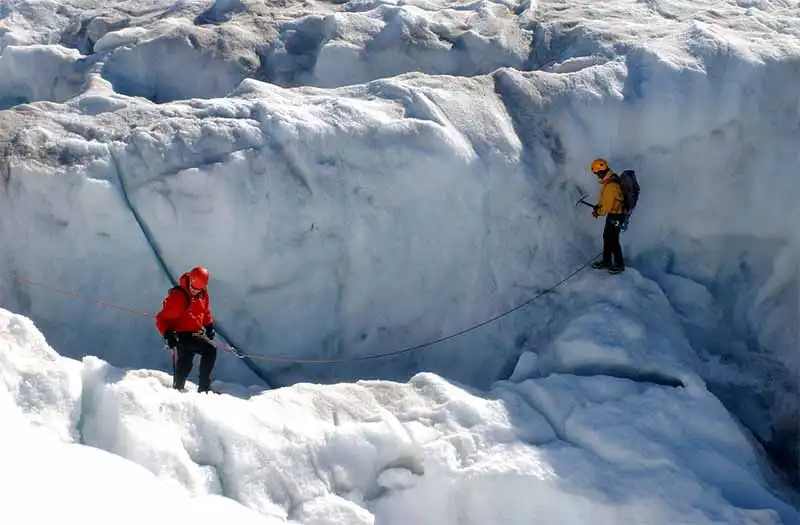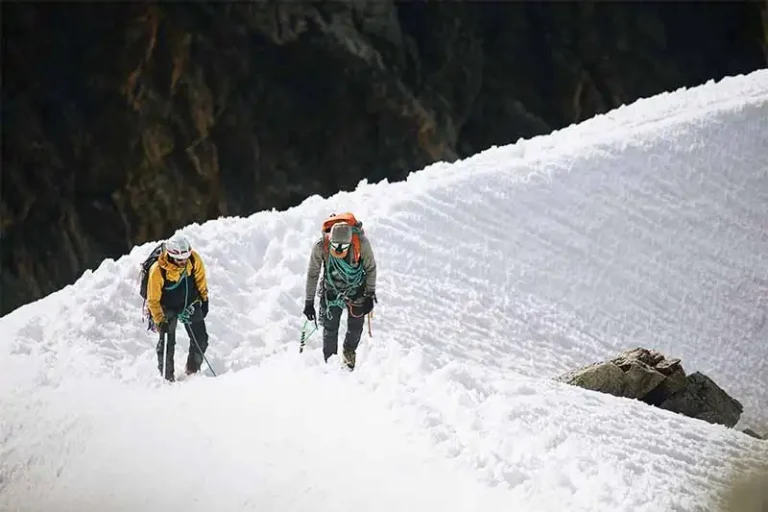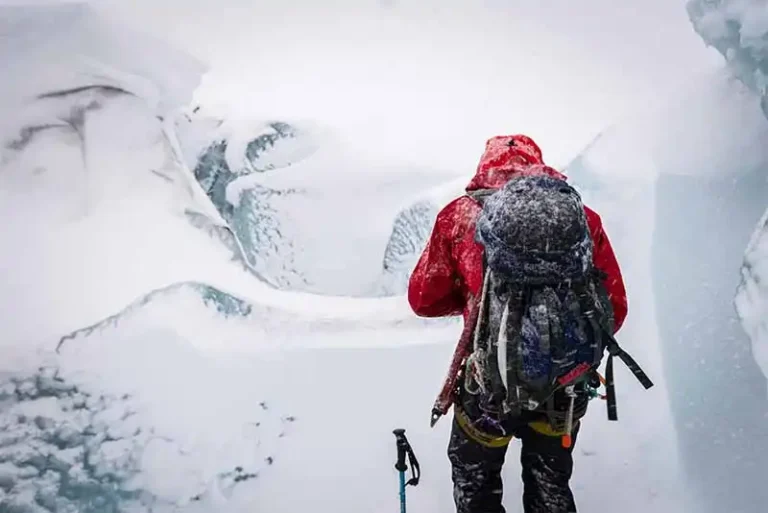9 Best Ice Climbing Axes of 2025
Conquer icy terrains with confidence using the best ice climbing axes designed for safety, performance, and durability.
Whether you’re scaling vertical ice walls or trekking snowy slopes, having the right tool is essential for stability and efficiency.
In this guide, we’ll help you choose the perfect ice climbing axe to match your climbing style, from beginner-friendly options to advanced technical gear.
Discover key features, expert tips, and top recommendations to elevate your Ice climbing adventures.
What are the Best Ice Climbing Axes?
Here are the top picks of the best Ice climbing axes.
Best for Beginners
Grivel G Zero Ice Axe
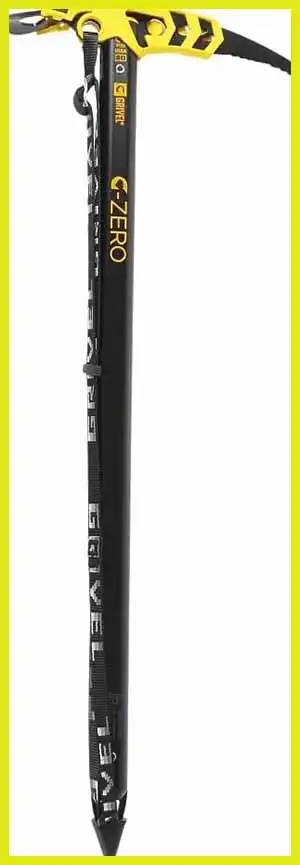
Black Diamond Raven Pro
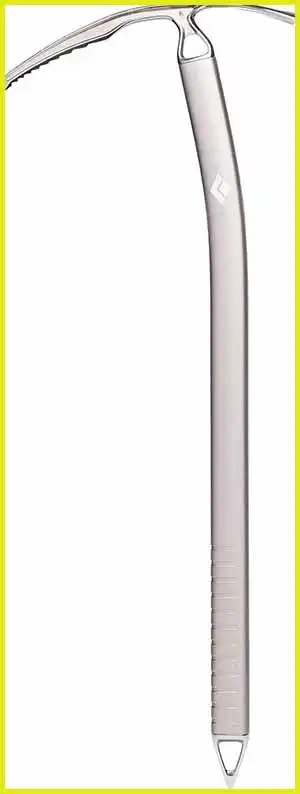
Best for Technical Climbs
Petzl Quark
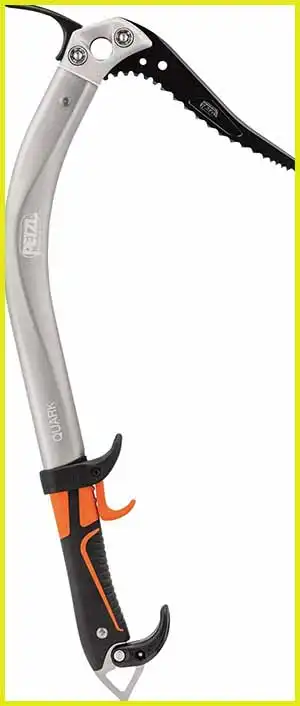
Black Diamond Viper
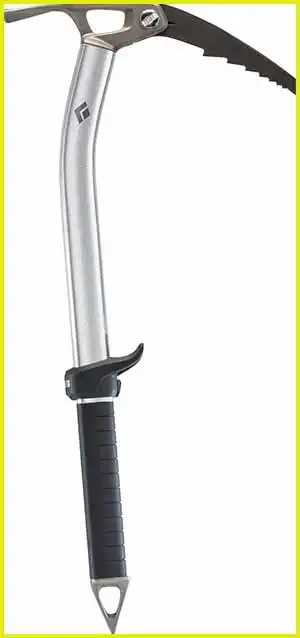
Best for General Mountaineering
CAMP Corsa Nanotech
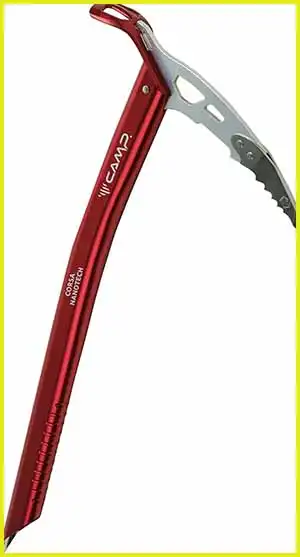
Petzl Gully Ice Axe
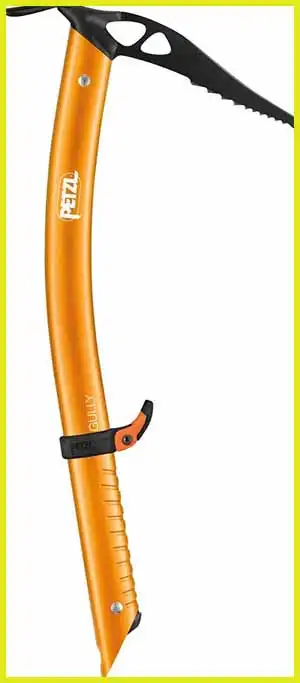
Best for Budget Buyers
Grivel Air Tech Evo
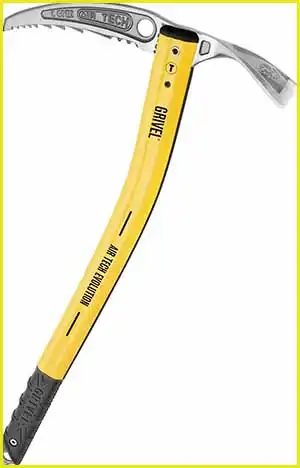
Salewa Alpine-X
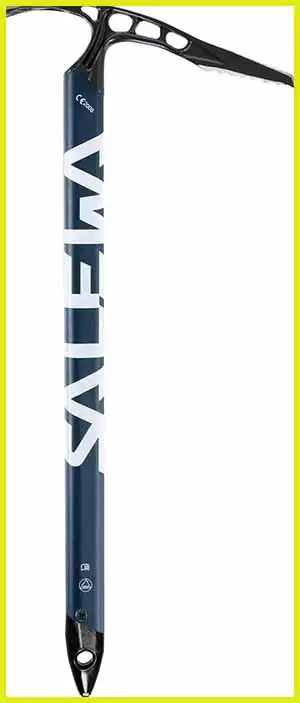
Best for Advanced Climbers
DMM Apex
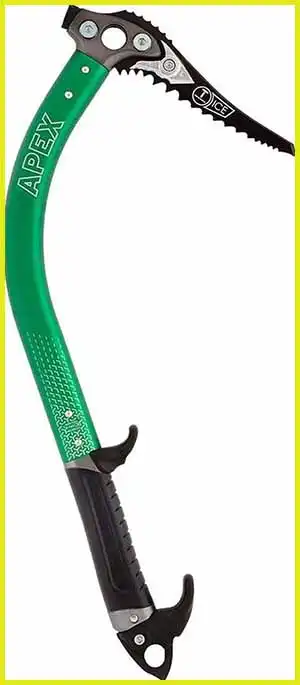
Grivel Tech Machine
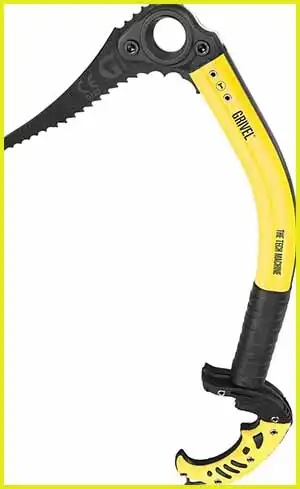
Buyer’s Guide: How to Choose Ice Climbing Axes
Ice climbing is more than just a sport; it’s an exhilarating adventure that tests both physical strength and mental resilience.
Whether you’re scaling frozen waterfalls or navigating icy alpine terrain, the right gear can make all the difference.
Among the essential tools for any ice climber, a reliable ice climbing axe stands out as a true game-changer, providing the support, precision, and safety needed to conquer challenging ice formations.
This guide is designed to help you navigate the diverse world of ice climbing axes, making it easier to find the perfect one for your specific needs and skill level.
Whether you’re a beginner taking your first steps on the ice, an intermediate climber seeking to tackle more technical routes, or an experienced professional pushing the limits, this guide has you covered.
Choosing the right ice axe isn’t just about picking a tool; it’s about finding a partner that enhances your performance and ensures your safety.
Durability is vital to withstand harsh conditions, functionality determines how effectively you can scale varied ice terrains, and ergonomic design ensures comfort during long climbs.
By the end of this guide, you’ll understand the key factors to consider, how to maintain your axe for longevity, and which models are best suited for different climbing styles.
Whether you’re looking for a lightweight option for alpine climbs or a technical axe for vertical ice, we’ve gathered all the insights you need to make an informed decision.
Let’s dive in and discover the tools that will elevate your ice climbing experience.
Why Choosing the Right Ice Climbing Axe Is Crucial
Selecting the right ice climbing axe is not just a matter of preference; it’s a critical decision that impacts your safety, efficiency, and overall climbing experience.
Whether you’re traversing steep icy slopes, ascending frozen waterfalls, or tackling mixed terrain, having the appropriate tool in hand can make a significant difference.
Safety First
When climbing ice-covered surfaces, stability is everything. A well-designed ice axe provides the essential support needed to maintain balance and prevent slips or falls.
The pick, head, and shaft work together to anchor securely into ice or snow, giving climbers the confidence to progress upward, even on precarious slopes.
A reliable ice axe also serves as a life-saving tool in self-arrest scenarios, helping climbers stop potentially dangerous descents after a slip.
Performance Enhancement
Efficiency is key in ice climbing, where energy conservation can mean the difference between reaching the summit or turning back prematurely.
High-quality ice axes are engineered to deliver superior penetration into hard ice with minimal effort.
The ergonomic grip and optimal weight distribution reduce fatigue, allowing climbers to maintain their momentum and focus on the climb rather than struggling with their tools.
Adaptability to Terrain
No two climbs are the same, and ice axes must adapt to varying terrains and conditions. For example:
- Steep Ice Walls: Technical axes with curved shafts and aggressive picks are designed to excel on vertical or overhanging ice.
- Alpine Terrain: Hybrid axes offer versatility for mixed climbing, where ice and rock are often encountered together.
- Snow-Covered Slopes: Traditional mountaineering axes with longer shafts are ideal for providing support and balance during glacier crossings or snowfield ascents.
By understanding how different axe designs cater to specific challenges, climbers can ensure they are equipped with the right tool for the job, enhancing both safety and performance.
Choosing the right ice climbing axe is an investment in your safety and success on the ice. It minimizes risks, maximizes efficiency, and ensures you’re prepared for the demands of varied terrains.
Whether you’re a beginner looking to gain confidence or a seasoned climber aiming to push your limits, the right axe is an indispensable companion on your journey.
Key Features to Consider When Buying Ice Climbing Axes
Choosing the best ice climbing axe requires careful consideration of several key features. These factors ensure the tool aligns with your climbing style, terrain, and safety requirements.
Below is an in-depth exploration of the most important aspects to evaluate when selecting an ice climbing axe.
Material
The materials used in the construction of an ice climbing axe directly impact its durability, weight, and performance:
Shaft Material:
- Aluminum: Lightweight and easy to handle, making it ideal for technical and fast-paced climbs where agility is crucial.
- Steel: Heavier but more durable, perfect for rugged, mixed terrains and high-impact use.
Head Material:
- Stainless Steel: Resists rust and offers long-lasting performance in extreme conditions.
- Carbon Steel: Known for its sharpness and strength, ensuring better penetration into hard ice.
Weight
Weight plays a pivotal role in determining how the axe handles during a climb:
- Lightweight Axes: Favored for technical ice climbing where precise placement and reduced arm fatigue are essential.
- Heavier Axes: Suited for general mountaineering, providing greater momentum for chopping steps or anchoring in deep snow.
Length
The length of an ice axe is determined by its intended use:
- Short Axes (50-60cm): Designed for steep ice walls and technical ascents where compactness improves control.
- Long Axes (65-75cm): Better suited for trekking and general mountaineering, offering stability and balance on gentler slopes.
Grip
A comfortable grip is essential for prolonged climbs, especially in cold and challenging conditions:
- Ergonomic Design: Prevents hand fatigue and ensures a secure hold, even with gloves.
- Rubberized Coating: Adds insulation and improves traction, reducing the chance of slipping during use.
Pick Shape
The shape of the pick greatly influences an axe’s effectiveness on different terrains:
- Curved Picks: Provide superior penetration and hold on steep ice walls, making them ideal for vertical or overhanging climbs.
- Straight Picks: Work well for general mountaineering and glacier travel, where the primary focus is stability rather than technical precision.
Modular Components
Axes with replaceable picks, adzes, and hammers offer enhanced versatility and longevity. Modular designs allow climbers to adapt their tools to different terrains and extend the life of their investment.
Certifications
Always look for tools that meet established safety standards:
- UIAA Certification: Ensures the axe has been rigorously tested for durability, safety, and performance.
Additional Features to Consider
- Leash or Leashless Design: Leashes offer extra security, while leashless designs provide greater freedom of movement.
- Hammer vs. Adze: A hammer is useful for placing protection on technical climbs, while an adze is better for chopping steps or clearing snow.
By carefully evaluating these features, climbers can select an axe tailored to their specific needs, whether for scaling vertical ice walls, navigating mixed terrains, or trekking across snowy landscapes.
A well-chosen axe enhances safety, optimizes performance, and ensures comfort during climbs.
Maintenance Tips for Ice Climbing Axes
Proper maintenance of your ice climbing axe is essential to ensure its longevity, performance, and safety.
Regular care not only preserves the axe’s structural integrity but also helps you avoid equipment failure during critical moments on the ice.
Follow these maintenance tips to keep your tool in top condition:
Cleaning
After every climb, it’s crucial to remove moisture, dirt, and debris from your axe to prevent corrosion and maintain its performance:
- Use a clean, dry cloth to wipe down all components, including the shaft, head, and pick.
- If the axe has been exposed to saltwater or gritty environments, rinse it with fresh water before drying thoroughly.
Sharpening
A sharp pick and adze are vital for efficient penetration and cutting on icy surfaces:
- Use a metal file to restore the edges of the pick and adze, following the original bevel angle for precision.
- Avoid over-sharpening, as it can weaken the metal and reduce the tool’s durability.
- Check for any burrs or nicks and smooth them out to maintain consistent performance.
Storage
Proper storage ensures that your ice axe remains in excellent condition between climbs:
- Store the axe in a cool, dry location to prevent rust and damage from moisture.
- Use protective covers for the pick, adze, and any modular components to avoid accidental injuries and preserve sharpness.
- Avoid storing the axe in direct sunlight or extreme temperatures, as these can weaken the materials over time.
Inspection
Regular inspection is essential to identify any potential issues before they become hazardous:
- Examine the shaft for cracks, dents, or signs of bending, which could compromise its strength.
- Check the pick, adze, and any modular components for wear, rust, or looseness. Tighten any screws or bolts as necessary.
- Look for worn grips or frayed leashes, and replace them to maintain safety and comfort.
Lubrication
Applying a thin layer of oil to the metal components helps prevent corrosion and ensures smooth operation:
- Use a light machine oil or multipurpose lubricant sparingly on the pick, adze, and shaft.
- Wipe off excess oil to avoid residue buildup, which can attract dirt.
Neglecting maintenance can lead to reduced performance, safety risks, and costly replacements.
By dedicating time to clean, inspect, and store your axe correctly, you’ll ensure it remains a dependable companion for all your ice climbing adventures.
Frequently Asked Questions about Ice Climbing Axes
What is the difference between an Ice climbing axe and a mountaineering axe?
The key differences lie in their design and intended use:
Ice Climbing Axes: These are shorter (typically around 50cm), with aggressively curved shafts and picks designed for steep, vertical ice. They excel in technical climbing where precision and secure placement are critical.
Mountaineering Axes: These are longer (usually 60–75cm), with straight shafts optimized for balance and support during snowfield crossings or glacier travel. They are ideal for general alpine use rather than vertical ice climbs.
Can beginners use technical Ice climbing axes?
While beginners can use technical axes, they might find them challenging to handle due to their specialized design:
Recommendation: A hybrid axe, which combines features of technical and traditional axes, offers more versatility and ease of use. It allows climbers to develop skills on varied terrain without committing to a highly technical tool.
How do I determine the correct length for an ice axe?
The ideal length depends on your primary climbing activity:
General Mountaineering: Stand straight and hold the axe by its head at your side; the spike should just touch your ankle.
Technical Ice Climbing: A shorter length (around 50cm) is preferable for improved control and maneuverability on steep, vertical climbs.
What’s the lifespan of an Ice climbing axe?
The longevity of an axe depends on its build quality and how well it’s maintained:
With regular cleaning, sharpening, and inspection, a high-quality axe can last 5 to 10 years or even longer.
Components such as picks and leashes may need periodic replacement to maintain optimal performance.
Are ice climbing axes sold as pairs?
It depends on the type of axe:
Technical Axes: Often sold as pairs, with one featuring a hammer for driving protection and the other an adze for cutting steps or clearing ice.
General or Hybrid Axes: Typically sold individually, as they are designed for broader use rather than paired technical climbing.
Read More;

